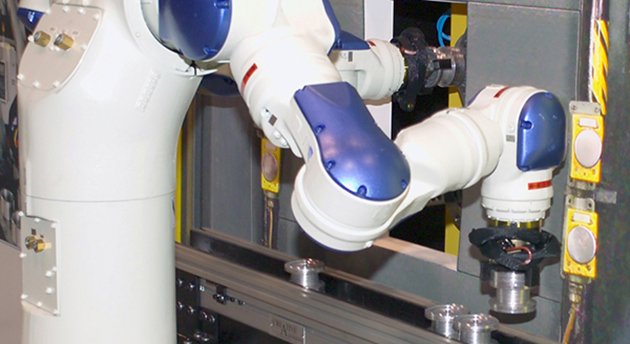
The Case for Automation and Machine Tending
If you are in the machining business, the chances are pretty good that you’ve heard the adage, “if the machine isn’t running, you’re not making money.” While there is obviously more to keeping your business running, it’s true that your ability to make widgets for a customer relates directly to getting paid.
If you want to increase revenue, you need to make more parts! Of course, there are limitations to how many parts you can make in a day, how many machines you have available, how long it takes to set up the machine, how long it takes to make a part, how much labor you have available, and how long your establishment is open.
For example: let’s say a customer comes to you with a design and says, “I need 10,000 of these.” While this is an attractive scenario, especially if the customer is willing to pay an ideal price, you’ll need to dedicate a resource (or several) to load and unload the machine tool until the job is complete.
Despite a full job schedule at your production facility, you decide this new opportunity is attractive enough to dedicate one resource to the new project. What happens, however, if this worker calls in sick or quits prior to the job completion? In this case, you’ll either redeploy your employees or scramble to find someone else to help. But, what happens if this keeps happening?
What if I told you that you could have a 100% loyal employee that never calls in sick, is willing to work 24 hours a day without complaint, and thrives on doing the same thing over and over again? If you’re thinking this employee sounds like a robot, you’re spot on! Each year, hundreds of machine shops face scenarios like the one above and turn to robotic automation to keep their businesses competitive and moving forward.
“But, robots are expensive!” you say. In reality, adding a robot to your machine tool has never been more affordable. Hiring an entry-level employee for $14 per hour will cost $28,000 per year for a 40 hour a week position, 50 weeks a year. However, the true cost of an employee can easily be 1.25 to 1.4 times that once taxes and benefits are factored into the mix.
A $14 per hour employee can easily cost your business $35,000 to $40,000 per year, which depending on complexity, is in the range of a robotic solution, including safety peripherals and a gripper. Sure, it’s an investment! But, think about it. This “employee” won’t call in sick, change over time, and will work 24 hours per day, when the job demands it.
Yaskawa Motoman robots have been proven to work for 15 to 20 years (sometimes, more, especially if a proper maintenance schedule has been followed), so you could realistically amortize a robot out over five years without a problem. At that point, even a $50,000 robotic solution will only cost you $10,000 a year (or $5 an hour if it kept to the same 40 hour a week, 50 week a year schedule).
“But robots are hard to program!” you declare. Again, in reality, this isn’t the case. With a touchscreen teach pendant, programming has never been more straightforward. The intuitive touchscreen controls and patented Smart Frame technology make robot setup and jogging a snap, even for novice robot users. In fact, with minimal training, teaching a robot via the intuitive Smart Pendant is almost as easy as jogging a CNC mill (and in some cases easier).
“But robots are taking our jobs!” you scream. Well, how many minimum wage employees do you have who are willing to constantly and reliably load and unload a machine for years on end? How long does it take you to find another employee if one leaves? If you seriously think about it, and you are able to meet the needs of a customer by fulfilling a 10,000 unit job, what’s stopping you from getting more orders like that?
It’s possible, you may need more machine tools, more employees to use said tools, and even more employees to sell and market the capabilities of your shop, etc. But, before you know it, you’ve expanded your business and hired several more employees – all because you hired a robotic “assistant” for the equivalent of $5 per hour. And, once this job is over, the robot can always be redeployed for other repetitive loading/unloading tasks.
If you ask me, that’s a return on investment I can get behind!
Of course, there are some things industrial robots are not good at, like smaller runs and jobs requiring a lot of variety. This is when a talented machinist is greatly needed. Moreover, a person that’s good at operating machine tools is the ideal person to send to robot training, so he or she can be redeployed as a robot operator for large runs at your production facility.
If your job shop has encountered this situation or you are interested in finding out more about what adding a robot to your workforce can do for your business, just give our dedicated team of experts and engineers a call.










